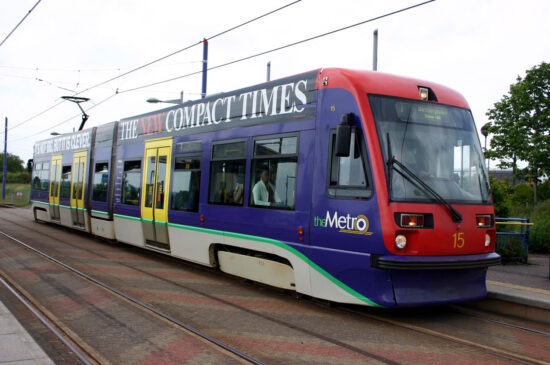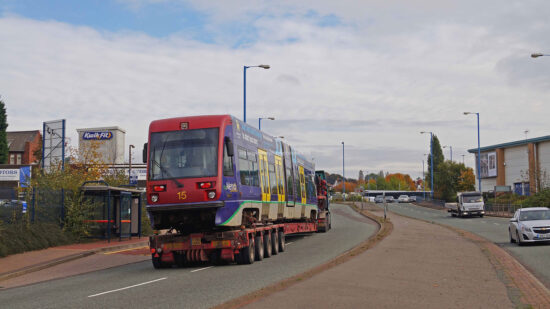Today “Whatever Happened To?” is again taking a look at one of the original Midland Metro T69s.
We have now reached the penultimate of the trams – no. 15. It was the other tram which arrived on 11th November 1998 (along with the last tram featured in this series, 14) but was not complete and required some fitting out in the West Midlands. Delivered in the standard fleet livery it would enter service in 1999 and would stay operational until September 2014 when it was taken out of service, one of two trams to run its last during that month (07 being the other).
It was 15th October 2014 that Allely’s would turn up to take 15 away to Long Marston and it would then stay there until 2018. As with most of the fleet it was sold to Booth’s for scrapping and by the middle of 2018 it was no more having been scrapped.



What is the reason for withdrawing and scrapping trams after only 15 years service when, in Amsterdam for example, most trams see double that service?
There were two significant reasons behind the withdrawal of the West Midlands Metro T69s. The first was their poor reliability combined problems with corrosion. This was an issue in common with the Metrolink T68 and T68A fleets which were also replaced early.
The other reason related to the fact that the T69s were not compatible with gradients and curves on the new Birmingham City Centre Extension then under construction. As additional trams were required for the extension anyway complete replacement was the most viable way forward. Of course the subsequent decision to go for sections of wire free operation only strengthened the case for a totally new fleet. Manchester did actually envisage refurbishing their Ansaldo trams alongside purchasing new trams but in the end the costs involved alongside the benefits of standardisation made a totally new fleet advantageous.
It is wasteful building stuff with such a short lifespan. Meanwhile Hiroden 651 & 652 have survived 78 years and a nuclear bomb, but remain in day to day service among a varying age of well looked after trams. It makes me wonder how long the Flexity and M5000s will last since 3001 is nearly 12 years old, so I would imagine they may soon be seen as outdated prompting replacement in a couple of years.
They were no longer fit for purpose. Too small and past their workable life. Same as the T68 Manchester cars by the same manufacturer. They were worked very hard (not enough trams) and allegedly were inferior.
The Blackpool Streamliners have also lasted 80 plus years.
One has to ask how much of vehicles that age is Triggers broom, though!
Modern Trams are designed for a 30 ish year lifespan, so as long as they don’t dsuffer the same corrosion issues as the T68 and 69s we should be OK. Sheffield’s are doing fine at nearly 30!
Strasbourg’s first series of 2nd generation trams new in 1992 (and assembled in Derby) are still running front line service and there are no plans to replace them yet although a small number have been withdrawn through accident damage.